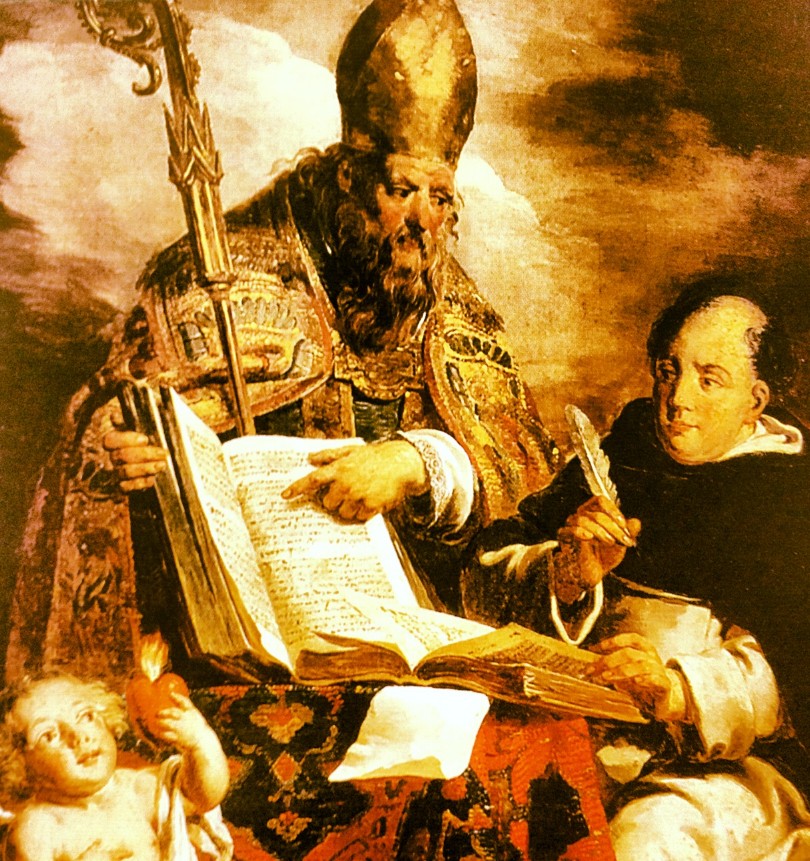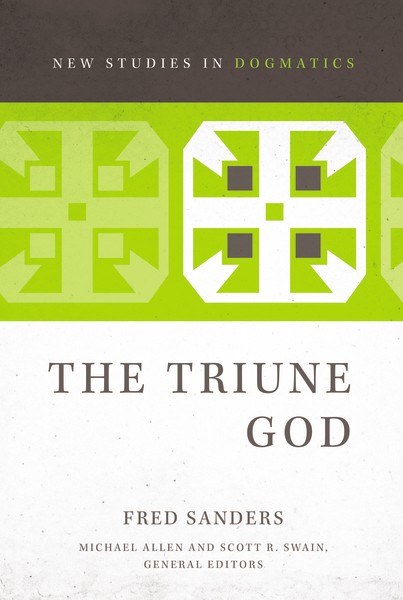
Augustine and Thomas, Pieter-Jozef Verhaghen (Sint-Pieterskerk, Leuven)
Here’s a free sentence for you, from chapter 4 of my soon-to-be-released book The Triune God:
The most basic pedagogical decision to make in presenting the doctrine of the Trinity is whether to begin the exposition with the temporal missions and reason back from them to the eternal processions, or whether to take the opposite approach, beginning rather with the eternal processions and then working out and down to the temporal missions.
Since it’s “the most basic pedagogical decision to make,” you’d think I would make the decision and stick to it, wouldn’t you? But it’s tough. Both procedures have advantages.
The advantage of starting with the missions and reasoning back to the processions is that this exposition follows the path of discovery. The Father sent the Son to be our savior, and reasoning back from that we find we must say that the Son’s identity is to be the one eternally from the Father. That is, since he is from the Father economically, we know him to be from the Father immanently. The mission, as Augustine says, reveals the procession.
And Augustine is the right person to quote, because it’s his treatment of this approach, in the early books of De Trinitate, that is the field-defining classic treatment. Augustine takes up the gospel phenomenon of God sending God, and works at it until he develops a theology of the divine life as an eternal begetting and an eternal gift, made known to us when they were made effective for us in the arrival of the Son and the Spirit.
But the opposite approach, starting with the eternal processions and then working down to the temporal sendings, also has much to commend it. It starts with the realities that are logically prior, even fundamental, for their results. First of all, God is. God’s is-ness has the form of two eternal processions. Logically subsequent to this divine being are the free divine actions that are taken in time: the sending of the Son to assume human nature, and the outpouring of the Holy Spirit to enliven human persons. If you follow this method of teaching, as Thomas Aquinas did in the Trinity treatise in his Summa Theologiae, you have everything staged and in place to make the work of salvation make sense.
Whichever direction you begin with, you end up having to compensate for some pedagogical liabilities. The missions-processions version requires students to meet Christ incarnate and then expand their notions of who this person actually is: the eternal Son who wasn’t always, or isn’t by nature, incarnate. In other words, it requires students to do the heavy mental lifting of re-thinking their initial assumptions. The processions-to-missions version, on the other hand, smooths that problem away but suffers under the sheer abstractness of its own opening gambit. Before students have even rehearsed why they would care about such a formal question, they have to try to breathe in the thin air of the concept of internal procession (what?) or eternal generation (huh?).
So in my own method of presenting the doctrine of the Trinity, I do both. I don’t really want to take sides against either Augustine or Aquinas, so I consider the pros and cons of each method. Then I combine the strengths of each, not by finding some sort of compromise between them but by working quickly back and forth along both trajectories, in fast enough succession that both can be grasped at the same time. After all, Augustine and Aquinas don’t disagree on the subject matter; they just framed their projects differently for the sake of instruction. For Augustine’s purpose, which includes establishing a workable definition of trinitarian missions, starting with the sending makes sense. For Aquinas’ purpose, which includes laying out first principles and then building on them, establishing the precept of eternal processions make sense.
 Just between you and me, in my work I give a certain priority to the Augustinian motif, tracing the missions back to the processions. That’s because my main goal is to describe a doctrine of the Trinity that is in vital touch with its exegetical basis; one that is in fact more transparent to its biblical foundation than most of us have come to expect.
Just between you and me, in my work I give a certain priority to the Augustinian motif, tracing the missions back to the processions. That’s because my main goal is to describe a doctrine of the Trinity that is in vital touch with its exegetical basis; one that is in fact more transparent to its biblical foundation than most of us have come to expect.
For a lot more on this topic and its implications, check out The Triune God (available now for pre-order).